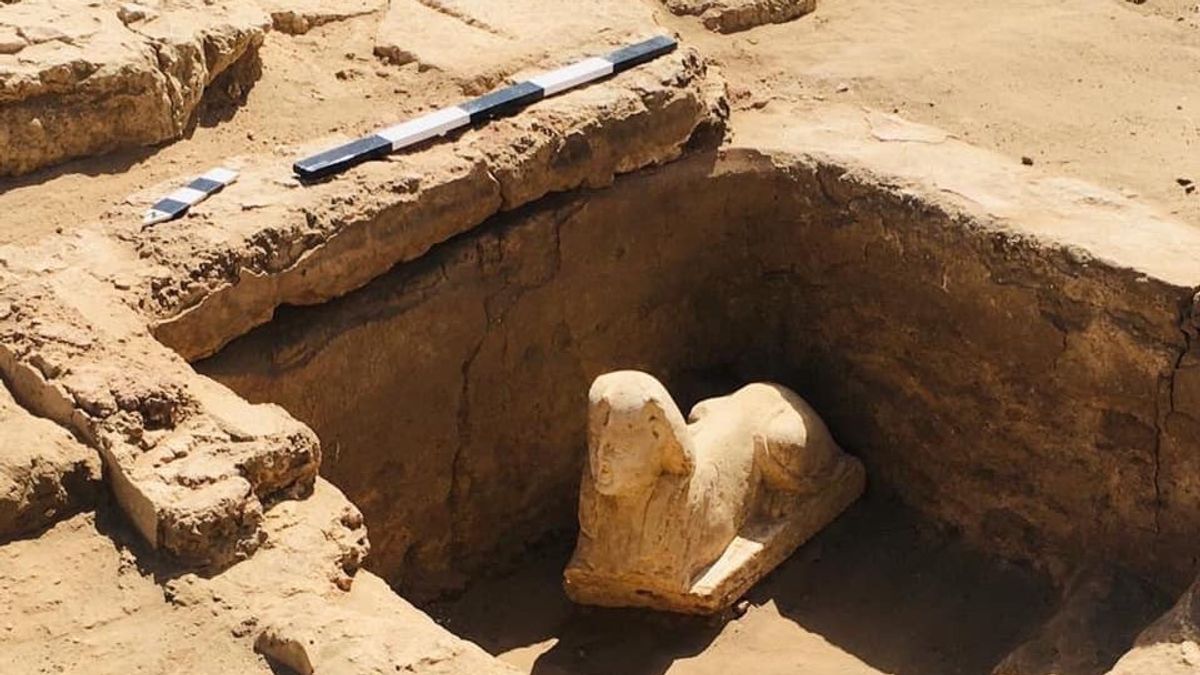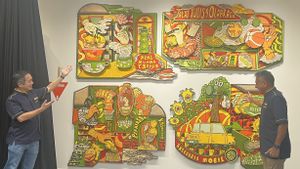JAKARTA - A new sprinx-like statue, but thought to be from the Roman era, with a smiling look and remains of a temple were found during an excavation mission in Qena, a southern Egyptian city on the east bank of the Nile.
The temple was engraved on limestone and consists of a two-tier platform, Mamdouh Eldamaty, a former minister of antiques and professor of Egyptology at the University of Ain Shams, said in a statement by the Egyptian Ministry of Tourism and Antiquities, cited from CNN, March 7.
A ladder and a mud brick basin for water storage were found inside.
The basin, believed to have originated in the Byzantine era, houses a smiling statue of sphinx, carved from limestone.
Eldamaty described the statue as "a royal feature". The statue has a "soft smile" with two dimples, and wears nemes on its head - a striped cloth head ornament traditionally worn by ancient Egyptian fibrous - with a cobra-shaped end or "uraeus".
A Roman inscription with hierogliph and demotic writings from the Roman times was found under sphinx.
The professor said the statue may represent Roman Emperor Claudius, the fourth ruling Roman emperor from 41 to 54, but noted more research was needed to verify the owner and history of the structure.
The discovery was carried out on the east side of the Denderer Temple in Qena, where the excavation is still ongoing.
It is known, sphinx is a recurring creature in the mythology of ancient Egyptian, Persian, and Greek cultures. Their resemblance is often found near tombs or religious buildings.
Not infrequently new sprinx statues are found in Egypt. However, the country's most famous sprinx, Sphinx Agung Giza, dates back to about 2,500 BC and represents ancient Egyptian Pharaoh Khafre.
Eldamaty, who is also president of the university, said in a separate release on the university's website, this was Egypt's first mission to the site in Dender. Work there will continue for several seasons to come, said Eldamaty, as excavations on the site promise to "increase much of the history of Egyptian civilization in the Greek and Roman times."
The English, Chinese, Japanese, Arabic, and French versions are automatically generated by the AI. So there may still be inaccuracies in translating, please always see Indonesian as our main language. (system supported by DigitalSiber.id)













